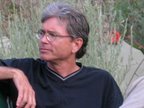In the wake of the wonderful 2010 World Series, a plethora of books about the San Francisco Giants have been newly-written or re-issued with updates for that memorable season. One of the latter is Matt Johanson's
Game of My Life: San Francisco Giants. Originally published in 2007, the new edition now includes vignettes from the championship club. Each chapter focuses on a particular player and their most memorable game in orange-and-black. It starts with Orlando Cepeda's debut in 1958--which was also the first Giants game in San Francisco--and ends with Brian Wilson's save in Game Five of the 2010 World Series. Along the way the reader is treated to terrific stories from the likes of "Dirty Al" Gallagher, Tito Fuentes (a childhood favorite of mine), Dan Gladden, Robby Thompson, Darren Lewis, Kirk Rueter, Rich Aurilia, and many other fan favorites and interesting characters. I particularly enjoyed reliving Bob Brenly's "greatest Humm-Baby performance of all time" game since I was in attendance with much of my regular Candlestick posse. My friend Frank actually caught Brenly's game-winning homer when it bounced up to our seats in Section 30 in the LF bleachers. I will also never forget Mike Krukow's complete game victory over the St. Louis Cardinals in Game Four of the 1987 NLCS. We were lucky enough to have scored tickets in Section 2, right behind home plate. After Jeffrey Leonard's improbable, wind-aided home run that gave the Giants the lead my buddy Ron was so excited he started beating on me and I collapsed to the concrete in a fetal position. Never was getting the wind knocked out of me so worth it! Giants fans will recognize many of the great moments: Will Clark's big hit off Mitch Williams to win the pennant in 1989, Brian Johnson's homer in extras to beat the Dodgers in 1997 (and Rod Beck's miraculous pitching in the same game!), Kenny Lofton's hit in 2002 to send the team to the Series, and Jonathan Sanchez' no-hitter against the Padres in 2009. Players from the obscure Brian Dallimore to all-time great Willie Mays share their anecdotes, making
Game of My Life a must-read for Giants fans.
Mr. Johanson has done an excellent job assembling all the stories and adding his own take on the colorful history of the many who've worn the Giants uniform. He's also--like me--a California public high school teacher! That's extra credit, for sure.
Many thanks to the nice folks at
Skyhorse Publishing for sending me a review copy.






